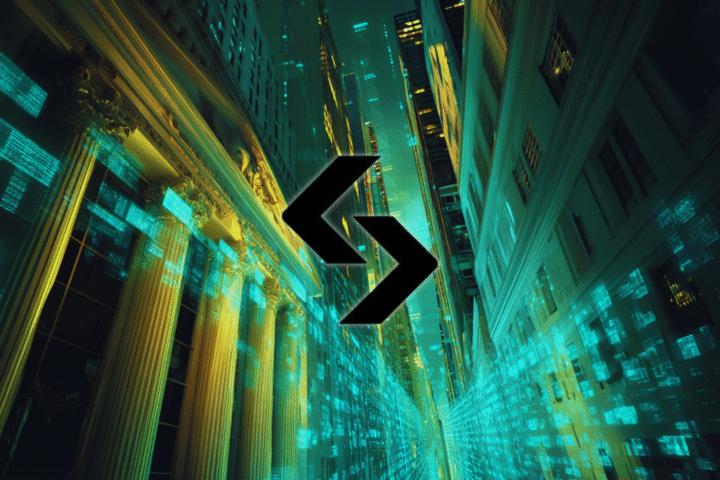Token burning, the act of permanently removing tokens from circulation, has become an increasingly popular mechanism in the cryptocurrency space. Proponents have touted its potential to boost value, control inflation, and even influence broader economic factors. But how much of this is hype, and how much holds real economic weight?
Delving into the controversial world of token burning, we engage in an exclusive dialogue with Christopher Johnson, PhD, also known as Mr. Lightspeed, the visionary behind Lightspeed Crypto Services and Bad Idea AI.

The Shib: Beyond price fluctuations, what are the broader economic implications of token burning, such as its impact on GDP, employment, and income distribution?
Mr. Lightspeed: Setting price fluctuations aside, we can place the context of this question to how governments manage fiat currency through monetary policies such as quantitative easing (QE) and open market operations (OMOs). Like token burning (or the opposite with minting), these policies impact the money supply, influencing GDP, employment, and income distribution.
For instance, QE injects money into the economy, potentially increasing GDP and employment by stimulating spending and investment. Conversely, OMOs can remove money from circulation, controlling inflation but potentially slowing economic growth. Income distribution can be affected similarly, as asset holders typically benefit more from these policies, exacerbating wealth inequality.
It would seem to me (Mr. Lightspeed) that one would not escape the political fight over redistributive fiscal policies, such as progressive taxation and social spending to address these disparities. It’s easy to see the battles of burning and minting easily translating to any future blockchain solution in this theoretical scenario.
The Shib: How does token burning interact with other economic variables, such as money supply, velocity of money, and consumer spending?
Mr. Lightspeed: Token burning reduces the money supply, analogous to how central banks manage fiat currency through open market operations (OMOs) by selling government securities to reduce liquidity. This decrease in money supply can lead to lower velocity of money as individuals and businesses hold onto their tokens, anticipating a future increase in value.
In the context of cryptocurrency as a national instrument, this could result in decreased spending and investment in the short term. However, if the public perceives the burning as a sign of a strong and appreciating currency, consumer confidence might increase, leading to higher spending. Central banks traditionally use these mechanisms to balance economic growth and inflation control.
In a decentralized cryptocurrency system adopted as a national instrument, similar effects could be achieved by aligning burning schedules with economic indicators to manage supply and demand dynamically. This approach would necessitate a sophisticated understanding of the interplay between tokenomics and macroeconomic variables to ensure economic stability while fostering growth.
The Shib: What are the primary regulatory challenges in overseeing token burning activities, and how can these challenges be addressed?
Mr. Lightspeed: Regulatory challenges in overseeing token burning are similar to those faced in managing fiat currency policies. Ensuring transparency and preventing manipulation are critical. For fiat, central banks operate under clear mandates and policies, with regular reporting and audits to ensure accountability.
Similarly, transparent disclosure of token burning events and leveraging blockchain for verifiable audit trails can address these challenges. Establishing a regulatory framework for cryptocurrencies that mirrors the oversight of fiat monetary policies can provide consistency and stability. Just remember, this is also not in the spirit of decentralization that many of us in the crypto world subscribe to.
The Shib: Given the global nature of cryptocurrencies, what level of international cooperation is necessary to effectively regulate token burning?
Mr. Lightspeed: International cooperation in regulating token burning parallels the collaboration seen in traditional finance through organizations like the International Monetary Fund (IMF) and the Bank for International Settlements (BIS). These bodies help coordinate monetary policies and provide guidelines to ensure stability in the global financial system. For cryptocurrencies, similar cooperation is needed to harmonize regulatory standards, share best practices, and coordinate enforcement actions, preventing regulatory arbitrage and ensuring consistent oversight.
It’s very easy to see how international conflict and even warfare can be carried out on the blockchain. In fact, it already is happening. Just the task of preventing regulatory arbitrage is overwhelming: To prevent regulatory arbitrage, where nations exploit differences in regulations for competitive advantage, it is essential to maintain uniform standards and enforcement mechanisms.
Nations should agree on stringent penalties for non-compliance and work together to monitor and address any discrepancies. The same old fight will occur that we have seen at the token level: who is going to burn their supply and who isn’t?
Why would the USA burn supply and China would not and so forth. This is why it is easy to see that this is not in the spirit of decentralization first and foremost as well as taking power away from than giving it to the people.
Related: What Are Move-to-Earn (M2E) Tokens? How Fitness Meets Crypto
The Shib: What safeguards can be implemented to prevent market manipulation through token burning? How can regulators and exchanges work together to ensure fair market practices?
Mr. Lightspeed: Safeguards against market manipulation in token burning, like in traditional finance, include mandatory disclosures, real-time monitoring, and robust internal controls. In a decentralized system, these safeguards can be automated using smart contracts, ensuring transparency and reducing the potential for manipulation. Decentralized exchanges (DEXs) and regulators can collaborate by integrating these safeguards into their protocols, sharing data through decentralized oracles, and enforcing compliance through community governance mechanisms. This approach aligns with decentralization by reducing the need for central intermediaries while maintaining market integrity. You can already see that this entire scenario goes against the grain of what decentralization is all about.
The Shib: How does the specific tokenomics model (e.g., deflationary, inflationary, or hybrid) influence the effectiveness of token burning? Are there optimal token designs for maximizing the benefits of burning?
Mr. Lightspeed: One of the most significant issues with token burning, regardless of the specific approach or tokenomics model, is the frequent lack of proper implementation. Many projects that emphasize burning don’t actually employ a mechanism that accurately reflects the reduction in total supply on-chain.
A common misconception is that simply transferring tokens to a “null” or “dead” wallet (an address with no known private key) constitutes an effective burn. However, this method is inadequate as it doesn’t actually adjust the total supply metrics recorded on the blockchain. These tokens still exist and are technically part of the total supply, even if they’re inaccessible.
The proper way to implement token burning is to use a dedicated burn function that actually deducts the burned amount from the total supply. OpenZeppelin, a widely respected library for smart contract development, provides such a function in their ERC20 implementation. This burn function not only removes tokens from circulation but also adjusts the total supply accordingly, ensuring that the on-chain metrics accurately reflect the new, reduced supply.
Unfortunately, many projects that heavily promote their burning mechanisms fail to utilize these proper burning methods. This oversight can lead to discrepancies between the claimed burned amount and the actual circulating supply, potentially misleading investors and users about the true state of the token’s economics.
This lack of proper implementation further underscores how token burning can be overhyped and misrepresented. Projects may boast about large token burns, but if these burns aren’t correctly reflected in the on-chain supply metrics, their impact is even more limited than initially thought. Investors and users should be wary of projects that claim to burn tokens but don’t provide transparency about their burning mechanism or fail to use established, secure methods like OpenZeppelin’s burn function.
The Shib: How does token burning affect investor behavior and decision-making? Does it encourage or discourage long-term holding?
Mr. Lightspeed: Token burning can indeed influence investor behavior, but its effects are often more complex and less straightforward than many projects claim. While burning is often presented as a universally positive mechanism for investors, its impact on decision-making varies significantly based on multiple factors:
1. Short-term vs. Long-term effects: Token burns often create short-term excitement and can lead to price spikes as investors anticipate scarcity. However, this effect is frequently overemphasized. In the long term, the impact of burning on holding behavior is less clear and depends more on the project’s overall utility and growth.
2. Speculation vs. Fundamentals: While burns might encourage some investors to hold in anticipation of future value appreciation, this behavior can be based more on speculation than on fundamental value. This can lead to artificial price inflation and volatility, rather than stable, long-term growth.
3. Transparency and Predictability: Clear, consistent burning policies can potentially encourage long-term holding by providing predictability. However, many projects fail to maintain transparency or consistency in their burning mechanisms, which can actually increase uncertainty and discourage long-term investment.
4. Overshadowing Other Factors: The focus on token burning can sometimes distract investors from more important factors like project development, adoption, and real-world utility. This overemphasis on burning as a value driver can lead to poor investment decisions.
5. Community Governance: In decentralized systems, community-governed burning policies can increase engagement and potentially encourage holding. However, the effectiveness of this depends on the quality of governance and can be overstated if the community lacks diverse representation or expertise.
6. Educational Initiatives: While educational efforts about token burning can help investors understand the mechanism, they often fail to provide a balanced view of its limitations and potential downsides.
7. Psychological Impact: The idea of reducing supply can create a false sense of scarcity, leading some investors to hold based on this perception rather than on the token’s actual utility or demand.
Related: Bitget Doesn’t Sleep: The New $500M Shift to On-Chain Stocks
It’s crucial to note that while token burning can influence investor behavior, its impact is often overhyped. Many projects present burning as a guaranteed way to increase value and encourage holding, but this oversimplifies the complex dynamics of crypto markets. In reality, factors such as project development, adoption, market conditions, and overall utility play much more significant roles in determining long-term holding behavior and value.
Moreover, the focus on token burning can sometimes encourage short-term thinking and speculative behavior, contrary to the claimed goal of promoting long-term holding. Investors might buy tokens solely in anticipation of burns, leading to pump-and-dump scenarios rather than stable, long-term investment.
While token burning can affect investor behavior, its influence is often overstated and should not be the primary factor in investment decisions. A truly effective token economy should focus on creating real utility and value, with burning potentially playing a supporting role rather than being the main attraction for investors.
The Shib: How does token burning affect portfolio management and investment strategies in the context of Bitcoin being part of the USA’s strategic reserve?
Mr. Lightspeed: First and foremost, it’s crucial to clarify that Bitcoin does not have a token burning mechanism. Bitcoin has a fixed supply of 21 million coins, with a predictable issuance schedule through mining. There is no burning process in Bitcoin’s protocol.
Given this context, let’s address how Bitcoin’s role in investment strategies relates to the concept of token burning in other cryptocurrencies:
Bitcoin as a Strategic Reserve Asset:
Bitcoin’s potential role in national strategy reserves or institutional portfolios is based on its properties of scarcity, decentralization, and immutability — not on any burning mechanism. Its fixed supply is a key feature, contrasting with the token burning strategies of other cryptocurrencies.
Impact on Portfolio Management:
For portfolio managers, the lack of token burning in Bitcoin actually provides more predictability compared to tokens with burning mechanisms. This predictability can be seen as an advantage in risk management and long-term strategic planning.
Comparison with Tokens That Use Burning:
When considering other cryptocurrencies that do implement token burning, portfolio managers must be cautious about overestimating the impact of these burns. While burning can create short-term price movements, its long-term effects on value are often overstated.
Diversification Considerations:
In a diversified crypto portfolio, assets with burning mechanisms might be included alongside Bitcoin. However, the burning feature should not be the primary factor in asset selection. Fundamentals such as technology, adoption, and real-world use cases are far more critical.
Risk Management:
The volatility introduced by token burning in other cryptocurrencies can indeed necessitate careful risk management. However, this is more applicable to newer, smaller-cap tokens rather than to Bitcoin itself.
Market Sentiment and Timing:
While monitoring market sentiment is important for all crypto assets, the idea of timing burns is not applicable to Bitcoin. For other tokens with burning mechanisms, the hype around burns can create short-term trading opportunities, but these are often speculative and risky.
Inflation Hedge:
Bitcoin’s potential as an inflation hedge is based on its fixed supply, not on any burning mechanism. Other tokens that implement burning might aim for a similar effect, but the efficacy is often overstated and less reliable compared to Bitcoin’s inherent scarcity.
When considering Bitcoin as part of a strategic reserve or investment portfolio, the focus should be on its fundamental properties and market behavior, not on token burning which is irrelevant to Bitcoin. For other cryptocurrencies that do use burning mechanisms, investors should be cautious about overestimating their impact on long-term value and portfolio performance. The effects of token burning are often hyped and may not significantly alter the fundamental value proposition of a given cryptocurrency project.
About The Expert
Christopher “CJ” Johnson was a seasoned military veteran turned blockchain expert. With a distinguished career in the US Air Force and a deep understanding of organizational leadership, he successfully transitioned to the dynamic world of cryptocurrency. As President of Lightspeed Crypto Services, LLC, he leveraged his strategic mindset and problem-solving abilities to drive innovation and empower the next generation of blockchain leaders. He was the listing manager of Bad Idea AI ($BAD), a daring experiment blending Blockchain, AI, and Decentralization into a high-risk, meme-worthy concoction.












